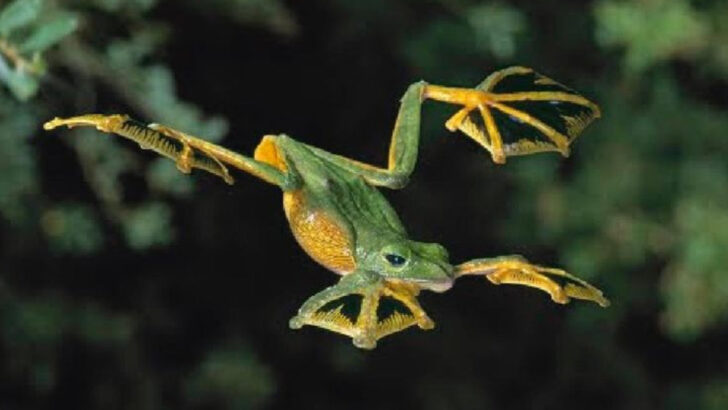Some animals seem to defy everything we think we know about movement. They walk upside down, scale vertical surfaces with ease, or appear to hang in midair like it’s nothing. It’s the kind of stuff that, if you didn’t see it with your own eyes, you might not believe. Nature, as it turns out, has its own set of rules—and plenty of creatures that know how to bend them.
What makes these animals so fascinating isn’t just their acrobatics, but the wild variety of ways they pull it off. Some rely on microscopic hairs, others on perfectly engineered wings or unexpected muscle control. It’s biology meeting physics in the most surprising ways. If you’ve ever paused to wonder how a gecko sticks to the ceiling or how a bird can hover like a helicopter, you’re in good company.
Flying Fish
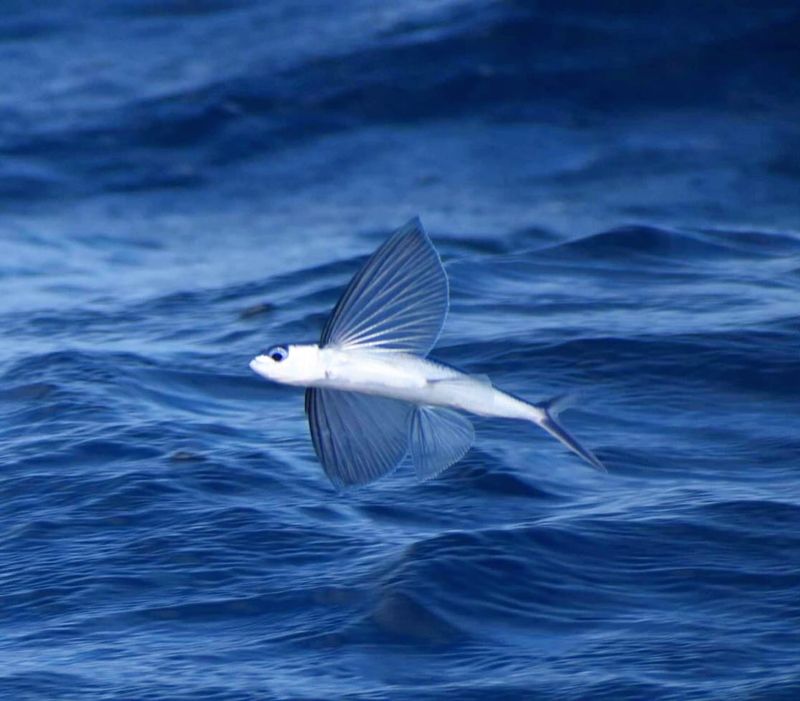
With a flick of its tail, the flying fish leaps from the sea. This remarkable creature uses its specialized wings to glide up to 200 meters. Its fins, akin to wings, catch the wind, allowing it to soar above the water. The ocean’s surface becomes a runway.
Predators lurking below are left behind as the fish skims the waves. These aerial acrobatics are not just for show. It’s a survival tactic. By taking to the air, the flying fish avoids marine predators. A marvel of adaptation, it turns the sea into its sky.
Colugo
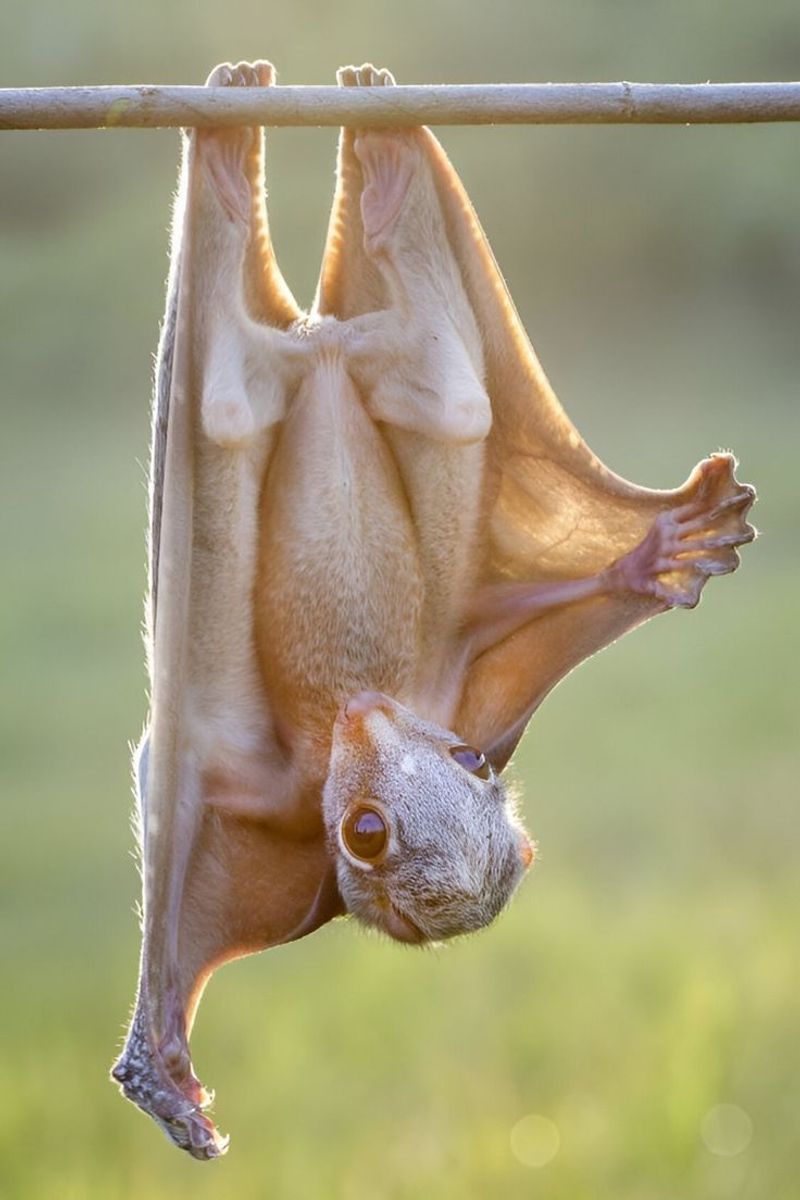
Often mistaken for a lemur, the colugo is truly unique. This Southeast Asian marvel can glide over 100 meters between trees. It stretches its membrane-covered limbs, creating a wing-like surface. This enables it to move through the forest with grace.
Its gliding ability is a wonder of evolution. The colugo’s daily journey is a thrilling aerial show. These gliders use their abilities to escape predators and find food. In the moonlit treetops, they appear almost ethereal, a testament to nature’s ingenuity.
Kangaroo Rat

The kangaroo rat is a true desert acrobat. Found in North America, it uses its long hind legs to jump several meters high. These nocturnal creatures make impressive leaps to evade predators.
Their tail acts as a balance, ensuring precision in the air. Living in arid regions, they rely on seeds for moisture. This unique lifestyle lets them thrive in harsh environments. The kangaroo rat’s athletic jumps are not just for survival, but an everyday ballet in the desert night.
Gecko
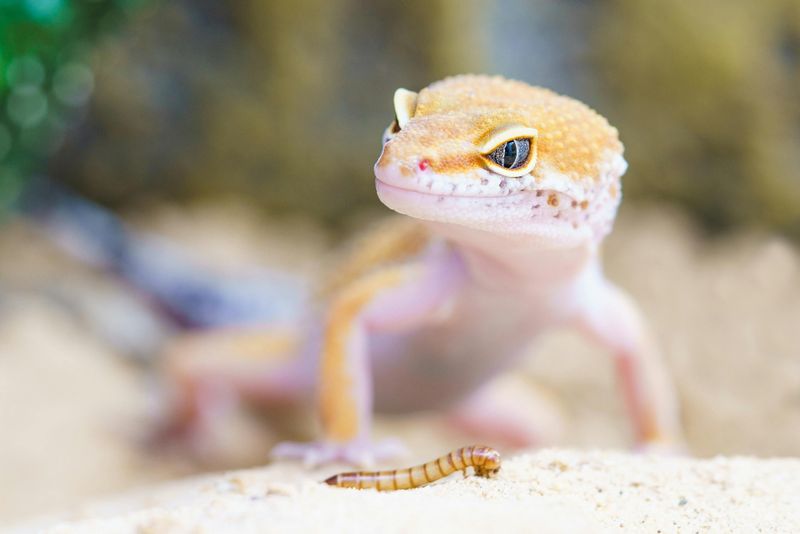
With their remarkable adhesive toe pads, geckos can scale smooth vertical surfaces with ease. These pads are covered with tiny hair-like structures called setae, which interact with surfaces at a molecular level. This incredible adaptation allows them to cling to glass, walls, and even ceilings. Each toe is equipped with millions of setae, making their grip incredibly strong yet easy to release. Their ability to maneuver across slick surfaces without slipping is a testament to nature’s engineering prowess.
Flying Snake
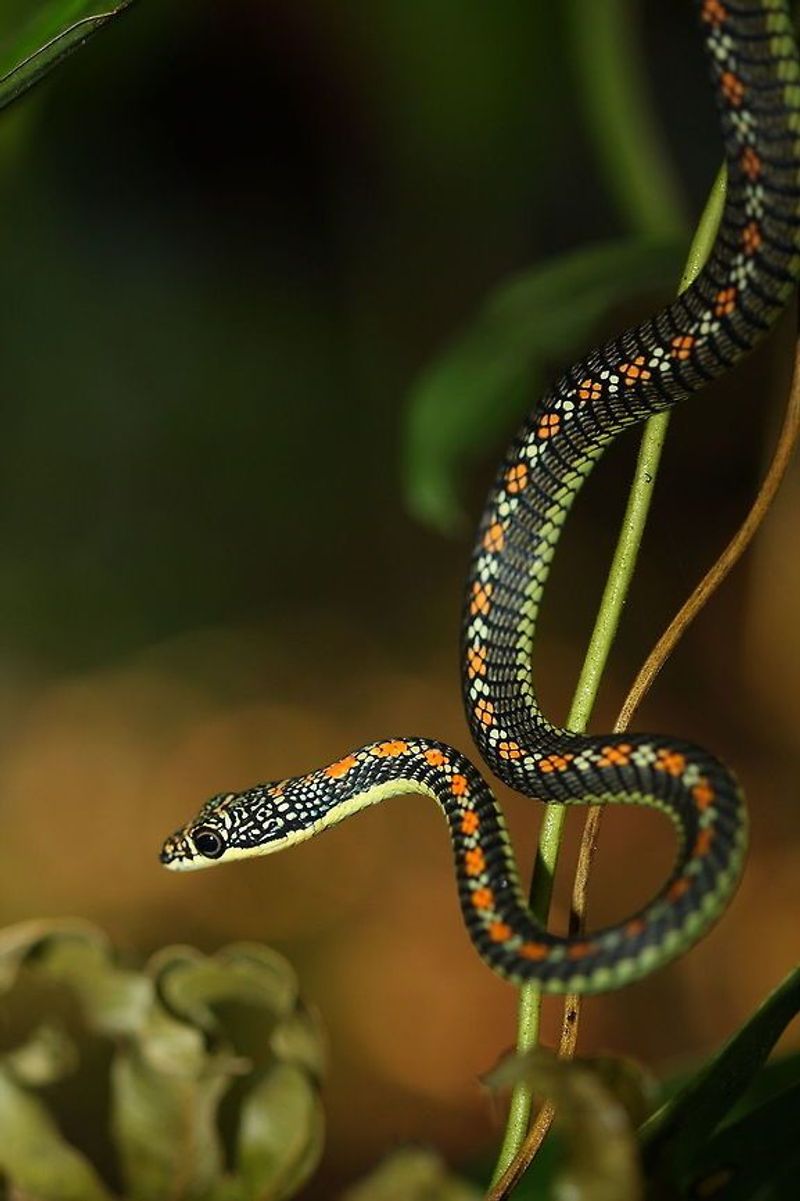
Imagine a snake that can fly. The flying snake of Southeast Asia flattens its body to glide through the air. By undulating its body in an S-shape, it can cover distances over 100 meters.
This serpent’s aerial dance is both mesmerizing and baffling. It uses this skill to move between trees efficiently. Predators and prey are caught off guard by its unexpected agility. The flying snake turns the sky into its hunting ground, redefining what snakes can do.
Jumping Spider
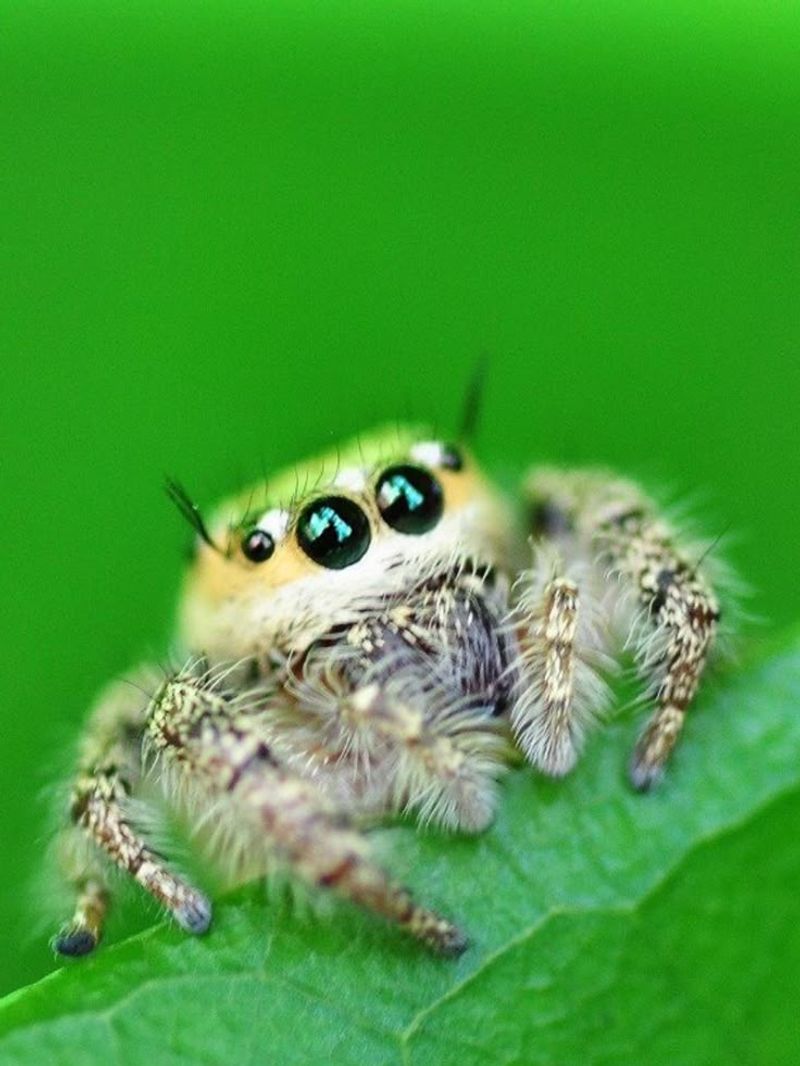
Tiny yet powerful, the jumping spider defies gravity with ease. Unlike other spiders, it doesn’t weave webs. Instead, it leaps great distances to catch prey using its strong legs.
This spider’s vision is like no other, with four pairs of eyes providing a panoramic view. Its leaps are accurate and calculated. It secures itself with a silk thread, ensuring safe landings. In the world of insects, the jumping spider is both predator and performer, showcasing acrobatic prowess.
Flying Squirrel
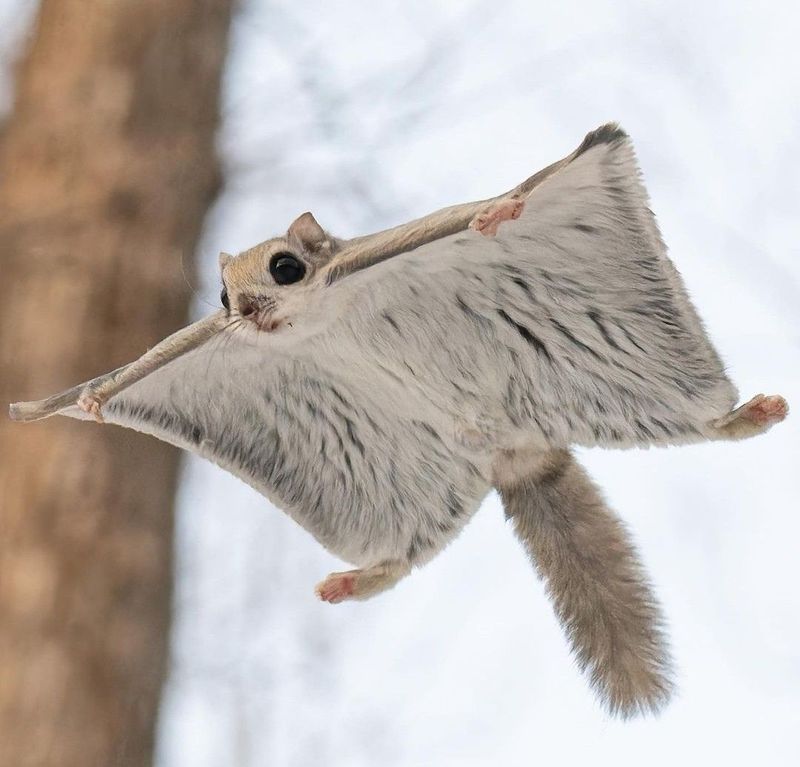
These nocturnal gliders have a unique adaptation that allows them to soar between trees. Flaps of skin that stretch from wrist to ankle act as wings, enabling them to glide for distances of up to 300 feet. This ability helps them escape predators and find food efficiently. By adjusting the tension in their limbs, they can change direction mid-air, a skill that requires precise control. Their large eyes also aid in night navigation, making them formidable flyers in the darkness.
Flying Lemur

Contrary to its name, the flying lemur doesn’t exactly fly. Instead, it glides gracefully using skin flaps. Covering over 100 meters, this arboreal mammal moves effortlessly in its forest home.
Its gliding journey is a spectacle, a peaceful flight through dense foliage. The creature’s lifestyle is a quiet ballet among the trees. It uses its ability to search for food and avoid danger. The flying lemur exemplifies nature’s creativity, adapting to the forest’s vertical world.
Wallace’s Flying Frog
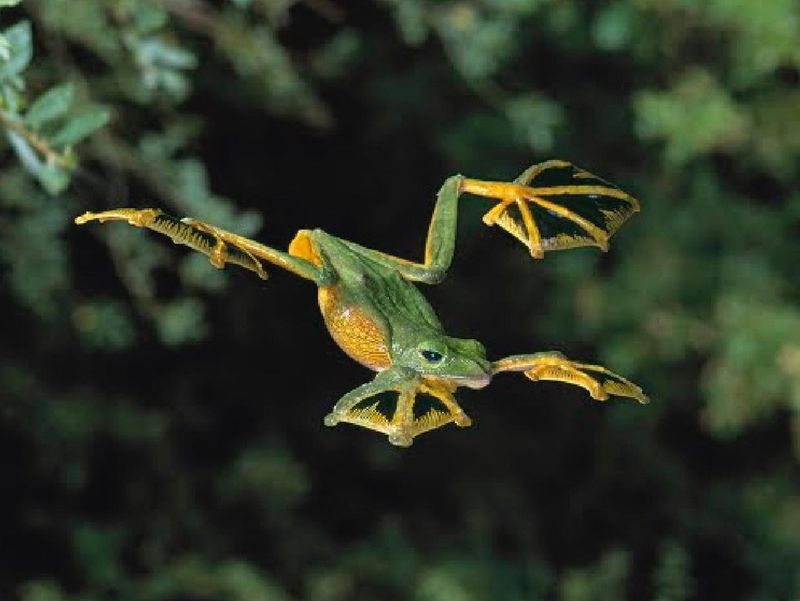
Wallace’s flying frog takes a leap of faith. Found in the rainforests of Malaysia, it uses its webbed feet as parachutes. These amphibians can glide over 15 meters between trees.
Their vibrant green and yellow bodies blend with the canopy. This gliding is crucial for avoiding predators and exploring new territories. Wallace’s flying frog turns each jump into a graceful flight, a testament to its adaptation.
Within the lush forest, they are both a marvel and a mystery, gliding silently among the leaves.
Spider
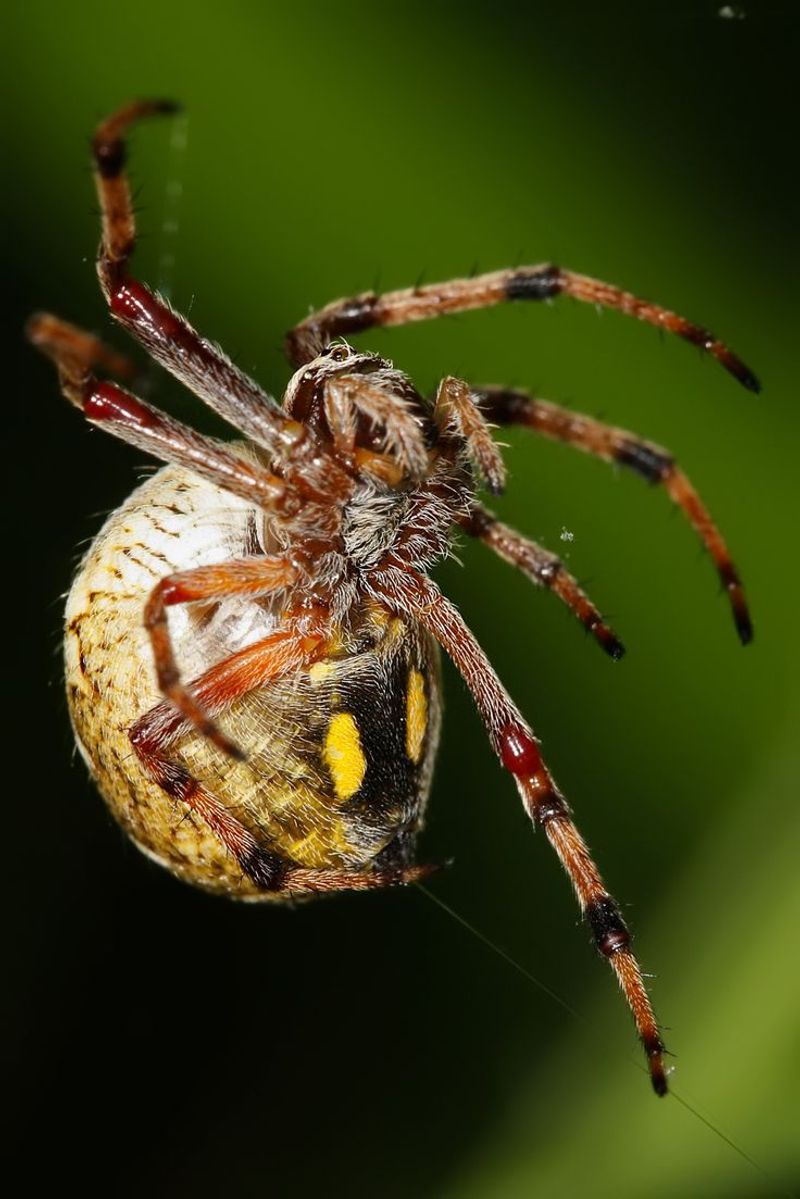
Spiders are not just masters of web-building but also of aerial mobility. Using silk threads, they can “balloon” through the air, traveling vast distances. This ability is particularly useful for young spiders seeking new territories. By releasing silk into the wind, they become airborne, a process that requires little energy but offers great rewards. This natural method of dispersal helps them colonize new areas and escape overcrowded environments.
Alpine Ibex
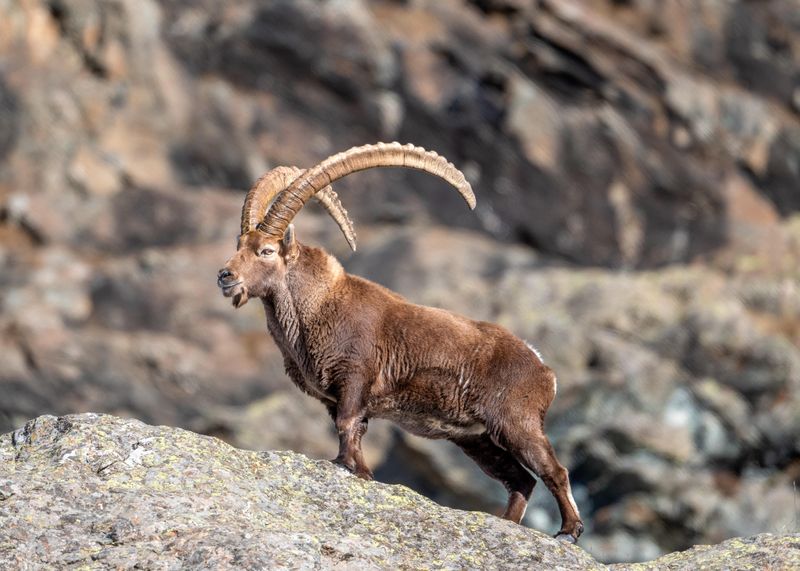
Renowned for their incredible climbing skills, Alpine Ibex can navigate steep, rocky terrains with unparalleled agility. Their hooves have a specialized shape and texture that provides secure footing on narrow ledges. This ability allows them to access hard-to-reach food sources and evade predators. Despite the challenges of their mountainous habitats, these goats move with confidence and precision, balancing effortlessly on sheer cliffs.
Tree Frog
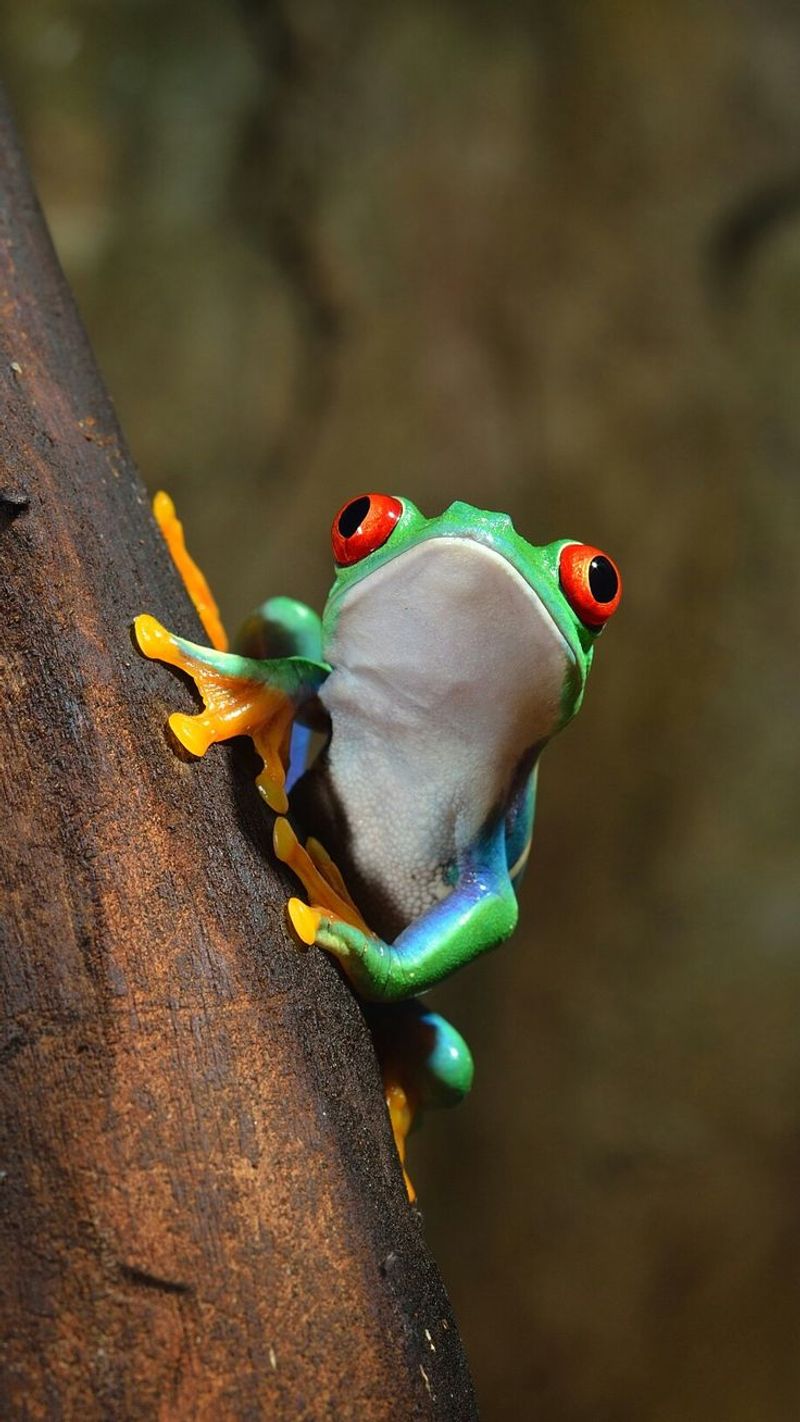
With adhesive pads on their toes, tree frogs can cling to even the most slippery surfaces. These pads function through a combination of suction and a sticky secretion, allowing frogs to scale smooth vegetation and evade ground-dwelling predators. Their vibrant colors often serve as a warning to potential threats, signaling their toxicity. Despite their small size, they are formidable climbers, navigating the forest canopy with ease.
Hummingbird

Known for their extraordinary flying abilities, hummingbirds can hover in place with precision. Their wings beat incredibly fast, creating the necessary lift to remain stationary while feeding on nectar. This adaptation allows them to access food sources that other birds cannot. Additionally, they can fly forwards, backwards, and even upside down. Their energy-intensive flight style requires frequent feeding, making them true marvels of the avian world.
Basilisk Lizard
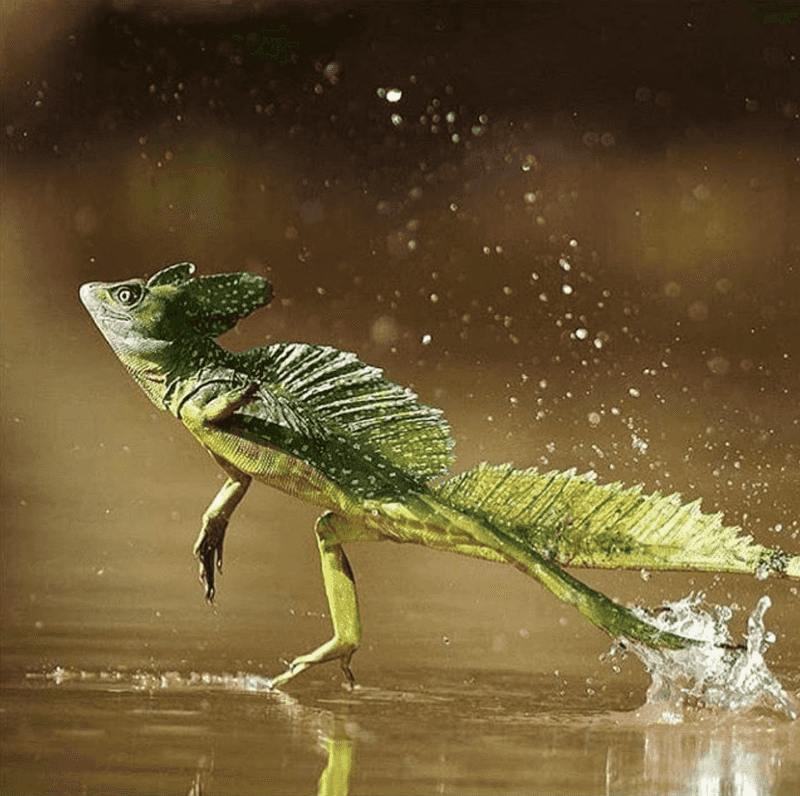
Dubbed the “Jesus Christ lizard,” the basilisk can run across water surfaces, a feat that seems to defy physics. This ability is made possible by their long toes and high-speed sprinting, which creates pockets of air that support their weight temporarily. It serves as an effective escape tactic from predators, allowing them to dash to safety. Their aquatic dash is a captivating sight, showcasing the lizard’s unique adaptation.
Bat
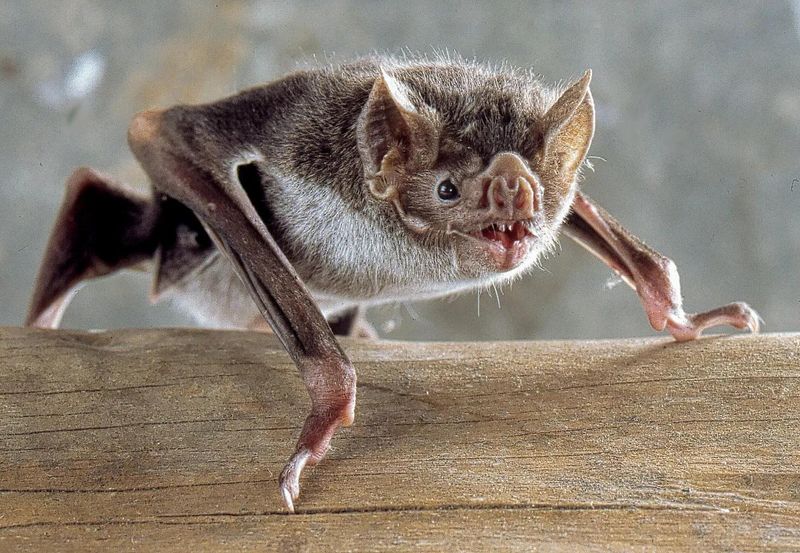
Bats are the only mammals capable of true flight, using their webbed wings to soar through the night skies. Their unique ability to echolocate allows them to hunt insects with remarkable accuracy, even in complete darkness. This sonar-like system involves emitting high-frequency sounds and interpreting the returning echoes, guiding them through complex environments. Their nocturnal lifestyle and flight proficiency make them successful hunters.
Monarch Butterfly
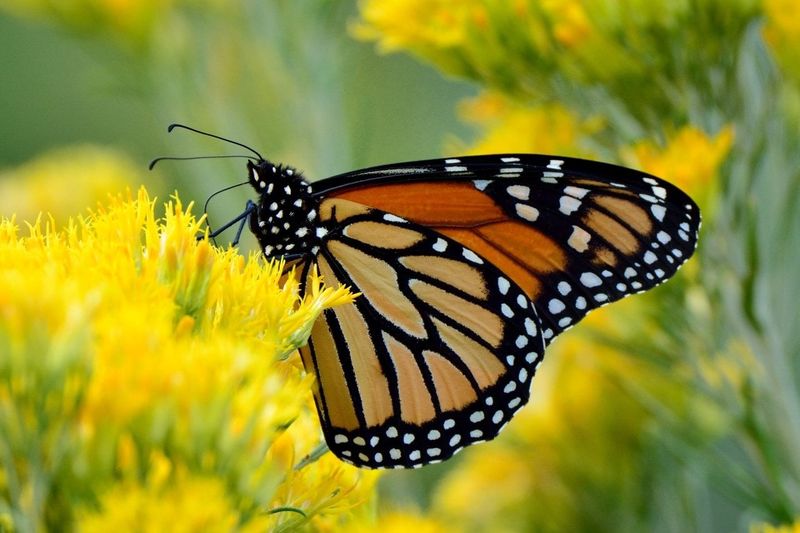
Monarch butterflies undertake one of the longest migrations of any insect, traveling thousands of miles. Their lightweight bodies and expansive wings are adapted for long-distance flight, enabling them to journey from North America to central Mexico. This epic migration is guided by environmental cues and an internal genetic compass. Despite their delicate appearance, they are resilient travelers, showcasing the endurance of nature’s smallest aviators.
Penguin
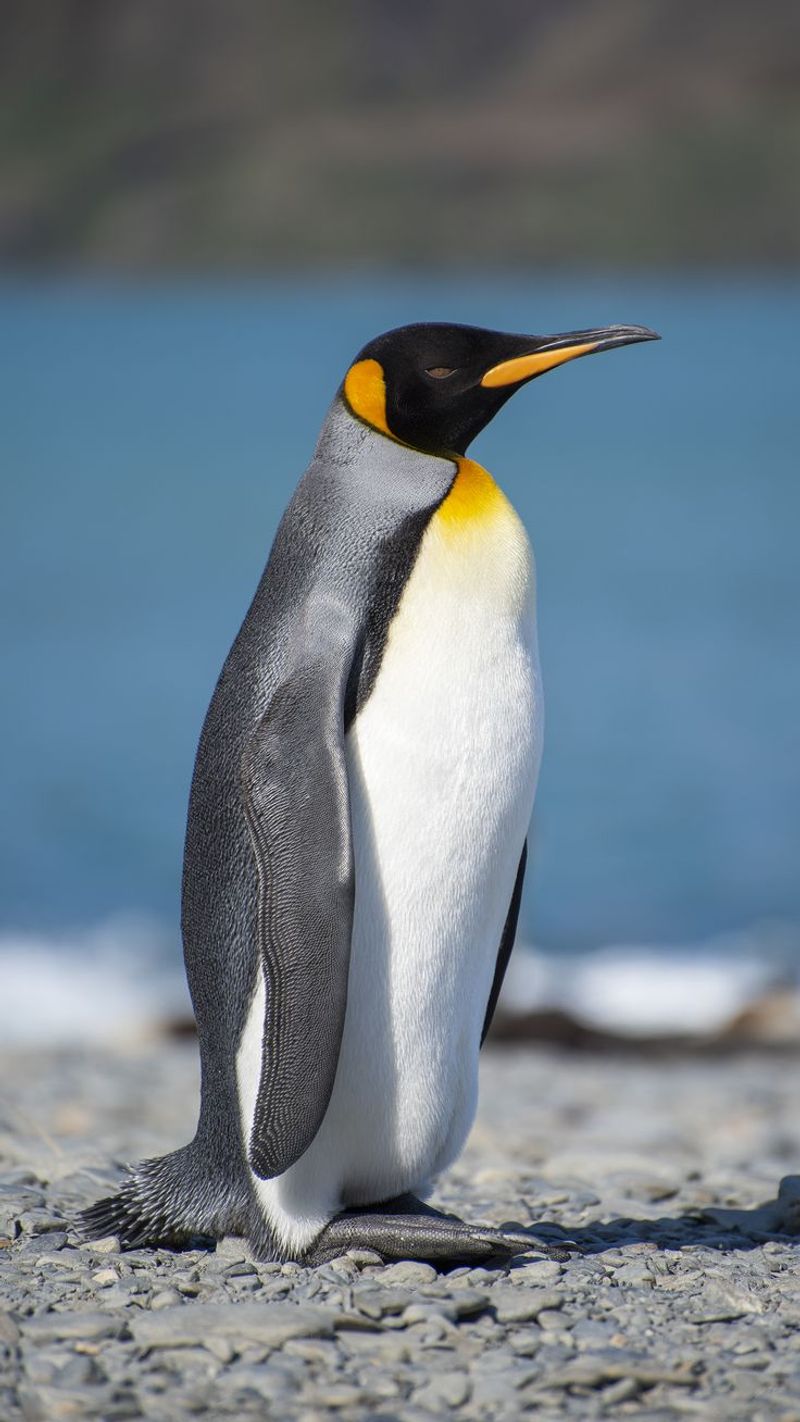
Penguins are exceptional swimmers, using their flipper-like wings to “fly” underwater with grace. On land, they have adapted to move efficiently by tobogganing on their bellies, conserving energy while traversing icy terrains. This dual adaptation allows them to thrive in the harsh conditions of the Antarctic, where they hunt for fish and evade predators. Their unique locomotion both in water and on ice highlights their evolutionary success.

